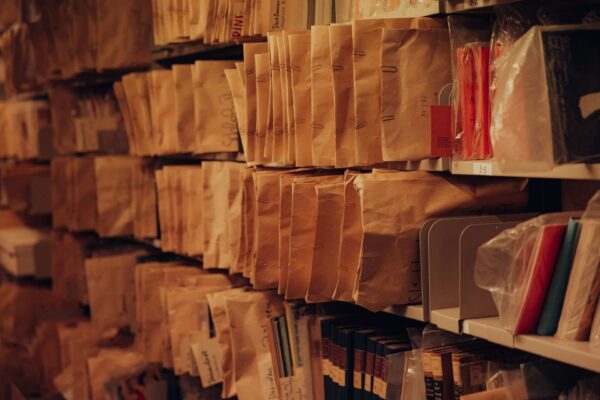The programme booklet collection
of the Deutsches Theatermuseum
The German Theatre Museum houses an impressive collection of around 500,000 playbills and programmes, which is constantly being expanded through donations, purchases and specimens from current seasons.
This collection offers a comprehensive overview of the development and diversity of German-language theatre, including Austria and Switzerland, as well as the theatre landscape of the GDR. All theatre genres are covered, from spoken and musical theatre to dance theatre and children's and youth theatre.

The beginnings: The playbill
The origins of playbills date back to antiquity, where prologues and epilogues already provided dramaturgical commentary on the performance. The oldest printed playbill dates back to 1520; the earliest playbills in the collection of the Deutsches Theatermuseum date back to the mid-18th century. These playbills, which initially had primarily an advertising function to get the public excited about upcoming performances, developed over time into important documents that provided comprehensive information about performances.
In the 18th century, playbills were simple, with basic information such as the title of the play and the date and time of the performance. Over time, they became more detailed, containing cast details and often flowery summaries or eulogies of the plays and their authors.
The appearance of the playbills changed in the 19th century. They became more factual and the names of the actors appeared for the first time, and directors were also mentioned for the first time.
The programme booklet
The introduction of programme booklets at the turn of the 20th century marked a significant change. The booklets not only provided space for background information on the production, but also for advertisements, which provided the theatres with additional income. The first German programme booklet was probably published by the Schiller Theatre in Berlin in 1894. This development was also supported by the need of popular theatres to offer a wider audience access to cultural events.
Over the course of the 20th century, the programme booklets constantly adapted to technical and social developments. During the Second World War, the theatres had to switch to simple pieces of paper due to a lack of paper. After the war, programme booklets experienced a renaissance and were enriched in the 1970s by innovative formats such as the programme books introduced by Claus Peymann. These contained extensive secondary literature, interviews and even complete play texts, making them coveted collector's items.
Media change in the 21st century
Media change in the 21st century In recent decades, theatres have increasingly used modern media to inform their (potential) audiences. After a phase in which CDs and DVDs were produced as supplements to season and programme booklets, the main accompanying information is now often provided on the theatres' websites and social media channels. Some theatres are already producing digital programme booklets with video and audio contributions and external links to additional materials. Trailers, podcasts and behind-the-scenes footage are also created and distributed by the theatres for information and advertising purposes. The Deutsches Theatermuseum documents these media changes and works on the exemplary long-term archiving of multimedia content.
The collection of the German Theatre Museum not only reflects the development of theatre culture, but also documents the changes in communication between theatre and audience over the centuries.